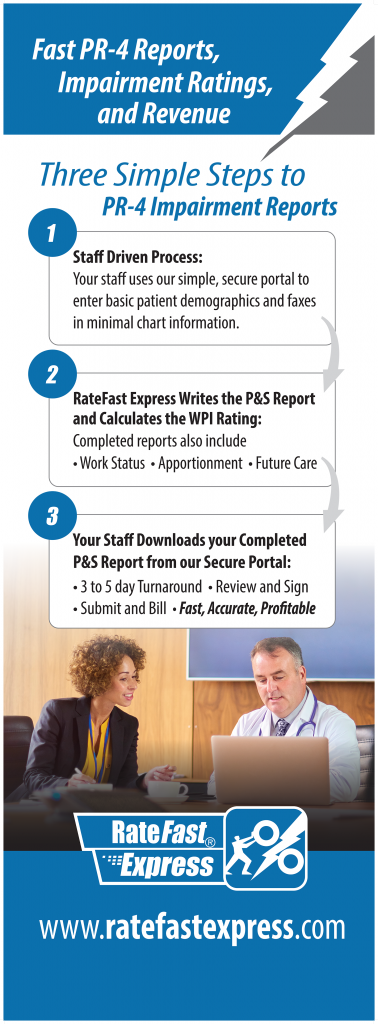A PTP is the Primary Treating Physician of a workers’ comp claim. When an injured worker’s claim is approved by an insurance company, they are either assigned or given a choice of a physician who will provide care, request treatment, and recommend specialists for examinations during the claim. The PTP also has the job of writing the impairment and permanent stationary reports for the claim, which determines how money the worker is compensated.
The PTP is a physician that is within the MPN (Medical Provider Network) of the insurance company. Generally, an insurance company will assign a PTP to a worker based off of proximity and specialty in relation injury.
If you are a worker who was recently injured and are confused or have questions about the workers’ compensation system in California, see part 1 and part 2 of the Worker’s Guide to Worker’s Comp series.
Continue reading RateFast Definitions: PTP (Primary Treating Physician)








